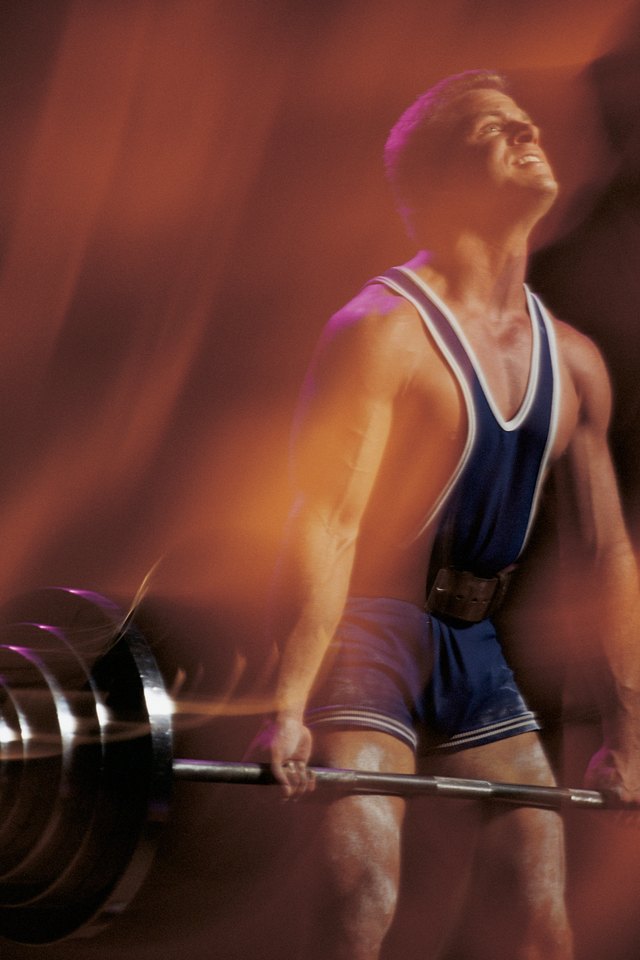Eliminating Posterior Pelvic Tilt in a Deadlift

The deadlift is a highly technical action that requires careful attention to form and posture. It works many different muscle groups, including your hamstrings, glutes, core and lower back. One common problem lifters have is falling into a posterior pelvic tilt when deadlifting. To avoid injury and boost your strength on the deadlift, you must eliminate this issue.
Posterior Pelvic Tilt
Your spine has a natural curve in it. When the bottom part of your spine -- the lumbar region -- loses this curve and flattens out, it results in a posterior pelvic tilt. Your pelvis and hips tip forward, reducing this curve and often making it look like your lower back is rounded over. This is usually brought about by tight glutes and hamstrings, as well as loose hip flexors. Deadlifting in such a position is extremely risky.
Deadlifting Issues
To perform a deadlift correctly, start the lift with your hands shoulder-width apart on the bar, your knees slightly bent, hips pushed back and your head and chest up. In this position you should have a slight arch in your lower back. As you pull from the floor, you should keep that arch by using your glutes and hamstrings to perform the movement and holding your core muscles tight. If your lower back rounds, it's a sign that you suffer from one of the causes of posterior pelvic tilt.
Solutions
A rounded lower back makes the deadlift a highly dangerous exercise and it will be extremely difficult to get stronger at it. The main cause is usually weak lower back muscles, according to physical therapist and trainer Mike Robertson. To resolve this, add exercises such as back extensions and Good Mornings -- in which you hold the bar across your upper back and lean forward while keeping your lower back arch -- to your routine. Working on your technique and concentrating on keeping your head up and chest out will also help.
Programming
You can still carry on deadlifting while you strengthen your lower back, but you should switch to a variation that doesn't cause you to fall into posterior pelvic tilt. Many lifters with postural issues find that rack pulls, in which you deadlift from an elevated starting position, work well. By not bending down so low to start the lift, you'll be able to maintain your lower back arch. Add core stabilization exercises such as planks, side bridges and ab wheel roll-outs into your routine too. Do these twice a week for three sets of 10, or in the case of the plank, three maximum holds. Stretch your tight glutes and hamstrings after your workouts and on days in-between too.
References
Writer Bio
Mike Samuels started writing for his own fitness website and local publications in 2008. He graduated from Peter Symonds College in the UK with A Levels in law, business and sports science, and is a fully qualified personal trainer, sports massage therapist and corrective exercise specialist with accreditations from Premier Global International.
